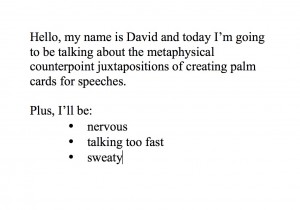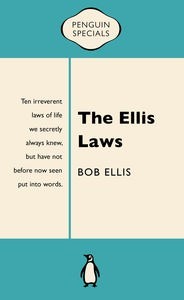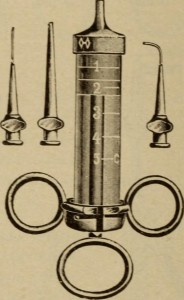An ongoing series showcasing less common albums and their covers
Catalog Number: ALP 1004
Appears to have been an Australian recording and pressing from when Oscar Cartier toured Australia.
Tech -- Culture -- Humour
An ongoing series showcasing less common albums and their covers
Catalog Number: ALP 1004
Appears to have been an Australian recording and pressing from when Oscar Cartier toured Australia.
When the first novel of a trilogy wins the Hugo and Nebula awards, one tends to expect big things in the follow up. It was with this assumption that I made my way to Ancillary Sword, the second of the Imperial Radch Trilogy from Ann Leckie. The first of the books, Ancillary Justice was a space opera that I found exciting, with the story unfolding from the point of view of an AI on a craft getting input from reanimated bodies, called Ancilliaries. It ended with a high point that promised so much more.
The version of Ancillary Sword that I “read” was actually the audio version, read by Adjoa Andoh. The presentation was capable enough without being obtrusive, but with enough emotion to be Breq, the main character in the novel. Breq is all that remains of the ship from the first novel, and the AI now has to find its way through the universe without all the accoutrements that a ship size AI can expect.
Knowing that a civil war will soon be occurring, Breq does not do what you would expect. Instead there is moral umbrage on local issues and side tracking from the major concerns of the trilogy.
Leckie has continued with the AI’s misunderstanding of gender, a device that is both enduring and a little limiting. With everyone a she, it can make it difficult to really get a handle on what is going on. Breq still maintains her ship ability to evesdrop on Ancilliaries, which allows for the single person narative to switch to scenes where the charater is not actually present. In the audio version this requires particularly close listening, as it is easy to forget where you are. My biggest problem is that I found it distracting, in that we would go from a single person’s experience of a scene, to a scene where our main character was not even available. It made me wonder why not being a ship was a tragedy when you still possess all the abilities you had before the ship was destroyed.
The action in this novel is a little slower, but this is not an action space opera. It is a ‘clean up the local issues, play local politics, throw military muscle around’ space opera, so don’t expect something that moves at a fast pace. When it does move, Leckie is able to move it along with a touch of the old Deus Ex Machina.
Overall Ancillary Sword isn’t a complete waste of reading time. The original premise of the first book is carried through, although the revelations at the end of the first are quickly ignored. Outside of those who have read the first in the series, I would recommend this to those who are looking for a new voice in science fiction. In this sophomore effort, Anne Leckie shows us that although she still has some things to learn, she will be an imagination to keep an eye out in the future.
Thought I would pass on a solution to an error I encountered with the podcast feed on this very WordPress site. I noticed the latest episode of the podcast hadn’t appeared in iTunes. I did the usual thing then of validating my podcast feed and got the following error:
XML parsing error: :3:0: XML or text declaration not at start of entity
That didn’t make a lot of sense to a layperson like me, so I did some digging and it pointed me to an issue I hadn’t noticed when I validated the feed: the first two lines of the feed were blank.
This is a problem. So after some more digging it became apparent that the issue can be in a number of WordPress files. Essentially there can’t be any free space before the starting tag in your PHP files.Some people find the space in their function.php file (in your theme folder), others in their wp-config file.
That’s exactly where my issue was. I had to blank lines at the bottom of my config file (shown as the pink line):
Deleting those spaces worked a treat, with the feed validating fine once I’d done that. Hope this helps someone!
An ongoing series showcasing less common albums and their covers / history
1986 from Spaceman Records. Cat. Number MRSM-05
01 Time
02 Wasp
03 My Window
04 Celina
05 Taste
 With thanks to Michael Webster and Bevil Conway at the University of Nevada, we now have a solid explanation on why some people saw the dress as white and gold and others perceived it as black and blue:
With thanks to Michael Webster and Bevil Conway at the University of Nevada, we now have a solid explanation on why some people saw the dress as white and gold and others perceived it as black and blue:
Three Perspectives on “The Dress”
When you look at this photograph, what colors are the dress? Some see blue and black stripes, others see white and gold stripes. This striking variation took the internet by storm in February; now Current Biology on May 14 is publishing three short papers on why the image is seen differently by different observers, and what this tells us about the complicated workings of color perception.
Individual differences in color perception uncovered by “The Dress”
For neuroscientists like Bevil Conway, “The Dress” phenomenon marked the greatest extent of individual differences in color perception ever documented. It’s long been known that certain optical illusions can cause us to see two different shapes in the same image (e.g., a face or a vase), but what makes “The Dress” photograph so mind-blowing is that it’s the first time a single image could be seen by different people as wholly different colors.
“It caught fire because it was a case in which color wasn’t doing what we expect,” says Conway, who teaches at Wellesley College and the Massachusetts Institute of Technology. However, the #whiteandgold versus #blackandblue debate on social media wasn’t scientific proof as to how different we each perceived “The Dress.” To find out, Conway and his team designed an experiment in which they asked people to identify the colors they saw on “The Dress” from a full palette.
In a survey of 1,400 individuals, with over 300 who had never seen “The Dress” before, Conway and his team found impressive individual differences in color perception; they also found, surprisingly, that people fall into one of three camps corresponding to the main groups identified by social media: a blue/black camp, a white/gold camp, and a smaller blue/brown contingent.
“It could have been the case that you had a continuum of perceived colors, but if you plot the colors people picked, you see two main clumps falling into the two categories for what words people used to describe the colors of ‘The Dress,'” says Conway. “This shows that the perception of the dress is variously stable. By studying the pair of colors in ‘The Dress,’ we can answer the age-old question: do you see colors the way that I see them? And the answer is sometimes ‘no.'”
Another finding from the survey was that perception differed by age and sex. Older people and women were more likely to report seeing “The Dress” as white and gold, while younger people were more likely to say that it was black and blue.
Conway believes that these differences in perception may correspond to the type of light that individuals’ brains expect to be in their environment. For example, people who perceive “The Dress” as white and gold may have just been exposed to natural daylight, while those who saw a black and blue garment may spend most of their time surrounded by artificial light sources. The brains of those who saw a brown and blue dress are likely used to something in between.
“The big open question is what causes these differences in the population,” Conway says. “One framework for understanding why you get these variations is to consider how light is contaminated by outside illumination, such as a blue sky or incandescent light. Your visual system has to decide whether it gets rid of shorter, bluer wavelengths of light or the longer, redder wavelengths, and that decision may change how you see ‘The Dress.'”
The many colors of “The Dress”
In the days after “The Dress” was posted online, a group led by psychologist Karl Gegenfurtner at Giessen University in Germany asked 15 people to view the photograph on a well-calibrated color screen under controlled lighting. The participants then had to adjust the color of a disc to correspond to the colors they saw in the photograph. For the lighter stripe, participants reported seeing a continuous range of shades from light blue to dark blue, rather than white and blue, the two dominant colors reported so far.
“The question should thus not be whether the dress is blue or white, but whether it is light blue or dark blue,” write Gegenfurtner and his co-authors. “Despite the continuous choice of matching colors, observers are consistent in calling the dress ‘white’ when their match lies above a certain brightness and ‘blue’ when it lies below.”
Gegenfurtner’s team also found that all of the colors observed in “The Dress” correspond very closely to those found in daylight, adding support to the theory that how the eye interprets natural sunlight is what triggered #Dressgate 2015.
The special ambiguity of blue
Would “The Dress” have gone viral had it been #greenandblack or #orangeandblack? Not likely, argues cognitive scientist Michael Webster at the University of Nevada, Reno. He believes that the photograph is part of a growing body of evidence showing that the human eye is more likely to confuse blue objects with blue lighting.
For example, if you stare at a gray object and make the gray increasingly yellow or blue, then you’re more likely to see the object as yellow than as blue. This difference likely comes from how the eye evolved in the presence of natural lighting from the sun and the sky.
To test this, Webster and his research team surveyed 87 college students on what color they found the light-blue stripes of “The Dress” to be. The participants were split about fifty-fifty between white and blue. The researchers then inverted the image of the dress so that the black stripes appeared blue and the blue stripes appeared gold. Of those surveyed, nearly 95% said that the stripes were yellow or gold.
“We discovered a novel property of color perception and constancy, involving how we experience shades of blue versus yellow,” write the authors. “We found that surfaces are much more likely to be perceived as white or gray when their color is varied along bluish directions, compared to equivalent variations along yellowish (or reddish or greenish) directions.”
So how we perceive colour can vary due to a range of factors. Not exactly news but there it is.
 Ok Aussie Apple TV users: Netflix’s Australian offering is available on Apple TV as of today.
Ok Aussie Apple TV users: Netflix’s Australian offering is available on Apple TV as of today.
Here’s how to get it:
1. Switch on Apple TV
2. Select the huge Netflix logo on the main menu
3. Confirm your email address (which will pre-load with your iTunes email)
4. Select the trial you want to choose (standard definition / HD etc)
5. Agree to the terms and conditions (read them for yourself but basically you get a month free then they start billing you via iTunes for whatever plan you selected)
That’s it. You can stop the auto-payment via iTunes if you don’t want to pay after your free month.
 I’ve created a template to print your own speech palm card template for your kids’ school speeches or your own! In my case the school wanted palm cards of the size 10cm (100mm) by 7cm (70mm), so that’s the free template you can download in MS Word .docx format for free by clicking here.
I’ve created a template to print your own speech palm card template for your kids’ school speeches or your own! In my case the school wanted palm cards of the size 10cm (100mm) by 7cm (70mm), so that’s the free template you can download in MS Word .docx format for free by clicking here.
If you need to create different sized speech cards than the template I’ve done, then just go into Microsoft Word’s Format > Document and navigate to the Page Setup window. In there you should see the ability to select different sizes, including the ability to ‘Manage Custom Sizes’. If you select that, you have the ability to create your own sized document (which is all I did to create the template you found here). Given the huge number of versions of MS Word I can’t really be more detailed than that I’m afraid.
Hope that takes one small piece of stress out of the speech creation experience!
Remember the good old days when Safari had a ‘View Source’ option in its menu? It’s now gone as default but here’s how to get it back:
1. Go to Safari Preferences / Advanced, then check the box ‘Show Develop menu in menu bar’ then close your preferences.

2. You’ll see that there’s now a Develop menu in Safari:
3. Go to the Develop menu and select ‘Show Page Source’:
4. That’s it – the Safari Web Inspector comes up and off you go. To remove it just select ‘Close Web Inspector’ from the same Develop menu in Safari.
Hope that helps!
 There’s no shortage of stereotypes surrounding older people. A key one revolves around the idea that those over say, fifty, get very set in their ways and that this worsens with the passing of the remaining decades. Add to that the related claim that most old blokes turn into crusty old grumps who see little good about the future, and you have a pretty potent image of what Bob Ellis and The Ellis Laws might be about.
There’s no shortage of stereotypes surrounding older people. A key one revolves around the idea that those over say, fifty, get very set in their ways and that this worsens with the passing of the remaining decades. Add to that the related claim that most old blokes turn into crusty old grumps who see little good about the future, and you have a pretty potent image of what Bob Ellis and The Ellis Laws might be about.
The trouble is, and perhaps this is because I’m the wrong side of forty myself, The Ellis Laws is probably one of the most cogent, incisive looks at modern society that I’ve read. Whether it’s the role of CEOs or the lack of sleep most of us suffer from there’s some very well argued positions that are very difficult to refute – at least from my male, over-40 viewpoint anyway. Ellis relishes the role of observer and it stands him in good stead throughout – there’s less overstatement than I expected and also an avoidance of glorifying the past too overtly. I wouldn’t go as far as to say that Ellis puts forward an upbeat view, but he at least provides some building blocks on which he believes some positive changes could happen.
As the cover blurb puts so well, this is a small book that puts forward the “laws of life we always knew, but have not before now seen put in words”. Yes it’s meant to be irreverent, but that is only one aspect. There are some concepts discussed that force some pretty deep introspection, and that for me was the biggest reward this work generated.
You can buy the book for yourself here for the princely sum of $9.99. It’s ten dollars extremely well spent, and one of the few books this year that I’ll be handing on to others recommending they have a read also.
For transparency: I’m a big fan of Bob Ellis’ published works and I have previously written a review of his stage adaptation of Bob Carr’s Diary of a Foreign Minister (which I’ve also reviewed). After that review Mr Ellis kindly organised a lunch with myself and Bob Carr as a thank you. It was one of the most illuminating lunches of my sheltered life, but I don’t feel indebted to either Bob in any way and hope it hasn’t influenced this review in any way.
 You may have seen some media around some recent research that looked at the impact of high levels of Triclosan on mice. You can look at the study here. Thanks to the brilliant team at the Australian Science Media Centre (via the UK Science Media Centre), there’s some expert feedback on the study and its implications for humans:
You may have seen some media around some recent research that looked at the impact of high levels of Triclosan on mice. You can look at the study here. Thanks to the brilliant team at the Australian Science Media Centre (via the UK Science Media Centre), there’s some expert feedback on the study and its implications for humans:
Dr Oliver A.H. Jones, Lecturer in Analytical Chemistry at RMIT University Melbourne, said:
“The results of this study are certainly interesting but I do not think they are a cause for concern for human health.
“Firstly the mice used in the study were primed with a tumor promoting chemical before being exposed to triclosan (which humans would not be) and the concentrations of triclosan used were much higher than those found in the environment.
“It is also worth remembering that mice are not mini humans and what happens in a mouse liver is often very different from what happens in human livers, or even in those of other rodents. For example, previous studies on rats, and hamsters treated with triclosan did not show any tumor formation at all. Thus the present study, whilst interesting, does not show the full picture.â€
Â
Dr Nick Plant, Reader in Molecular Toxicology at the University of Surrey, said:
“This study has been undertaken robustly and the experimental findings are reasonable. Note that the authors study only mice, and draw conclusion only on mice. Their comments on human health are very circumspect.
“As the authors state, it is difficult to assess if the dose that they use in mice is relevant to human exposure levels, but at a simple examination it appears to be much higher than I would expect to see in a human. This further complicates extrapolation to the human situation as we are not comparing equivalent exposures.
“The data does support the action of triclosan on the nuclear receptor constitutive androstane receptor(CAR), and that this could act as a tumour promoter. The suggestion that this action could be further exacerbated by the regenerative hyperplasia seen in humans suffering from liver disease is reasonable, but there is no real evidence to support this.
“However, the authors do not address a key point in their paper, which is whether the proposed mechanism is conserved across species. The previously reported effects of Triclosan on the nuclear receptor PPARalpha do not impact human health as the PPARalpha signalling pathway is different between rodents and humans (and the authors dispute these anyway). In this paper, the authors suggest that the tumourogenic mechanism is via another nuclear receptor CAR. For this nuclear receptor there is also a considerable species difference in response, with chemicals (including carcinogens) acting differently between rodents and man.
“On this basis, it is not valid to state that the effect of triclosan in mice will occur in humans as well, indeed the historical body of evidence suggests a species-dependent effect is more likely. However, as with all new signals, it is important to examine them and decide if they are biologically plausible in the species of concern (in this case humans). I would treat this paper as interesting, but would not see it as the basis for a shift in triclosan use at present. There are simply too many unanswered questions as to whether the findings are relevant to humans, and indeed the body of evidence currently suggests that they are not.â€
Prof Tony Dayan, Emeritus Toxicologist, said:
“The report describes a sophisticated set of investigations into the molecular biological and pathological consequences of prolonged exposure of laboratory mice to TCS, culminating in promotion of the development of liver cancer in mice pre-treated with a powerful cancer-causing chemical, i.e. tumours occurred more often in mice co-treated with TCS over a long period.
“The authors themselves point out that the dose of TCS was very considerably higher than the average amount that humans might ingest from toothpaste and other products or in drinking water if the normal procedures of water purification had not removed any that might have been present in raw water sources. They did not explore whether lower doses had similar actions nor did they investigate the relevance of the gene changes shown to human tumour development.
“High doses of many substances have been shown to act as ‘promoters’ of liver tumours in experimental animals, including a number that have been sufficiently well studied to show that the same effect has not occurred in humans, including phenobarbitone, a well known treatment for certain types of seizures, and certain [>] other medicines.
“Any study of the means by which a chemical can act as [>] a promoter in the laboratory can provide important information about cellular mechanisms. However, it is not possible to draw a direct link based on the artificial nature of those experiments and a risk to people. That would require much more information particularly whether the chemical had any relevant action after the much lower doses to which we might be exposed and if the same pathways were affected in a similar way in humans.â€
Prof Alan Boobis, Professor of Biochemical Pharmacology, Imperial College London, said:
“This is not the first study of the carcinogenicity of triclosan, even in mice. Previous, guideline compliant, studies have established that triclosan is carcinogenic to the liver of mice but not to rats or hamsters. The mechanism of tumour formation has not been established, but it does not involve damage to DNA (genotoxicity). The present study extends information on the possible mechanism for liver tumours in mice. This appears to involve initial damage to the liver, leading to fibrosis which then acts to exacerbate any pro-carcinogenic incidental or induced DNA damage, by compounds that can interact directly with DNA.
“The dose used in the present study was similar to that at which tumours had been observed previously in mice. Studies in primates showed no hepatic damage at doses greater than those used in the present study, when administered for 12 months. Whilst it is possible that the carcinogenic effect in mice is relevant to humans, it should be noted that mouse liver tumours are induced by many chemicals, and often they are not relevant to humans. Further information on the mode of action for the liver tumours observed in the present study would be necessary to determine the relevance if any for triclosan.
“Notwithstanding this uncertainty, the tumours in mice are secondary to hepatic damage, an effect that shows a threshold. Hence, ensuring exposure to triclosan is below that causing liver damage would be more than sufficient to avoid the risk of any carcinogenic effects in humans.”
 Â
Prof Sir Colin Berry, Emeritus Professor of Pathology at Queen Mary University of London, said:
“Triclosan is metabolised in the liver by sulphation and glucuronidation; i.e. groups are added to the compound to make it soluble enough to excrete. So this is work for liver cells (like alcohol) and if you have damaged them, any continued stimulus to activity will result in growth with increased tumour numbers in experimental situations where DNA damage has been induced. Tylenol uses the same mechanisms and would probably act in the same way.
“Initiation and promotion are long standing concepts in oncogenesis but anything increasing division rates in liver cells will work – more cirrhotics get hepatocellular cancer now as we keep them alive longer with their liver nodules growing.â€
So the summary of all that? Nothing’s proven as far as human impact and that most likely you’d need to be ingesting levels of Triclosan that damaged your liver before there’d be a likelihood of tumours.
Copyright © 2025 · Magazine Child Theme on Genesis Framework · WordPress · Log in
Recent Comments